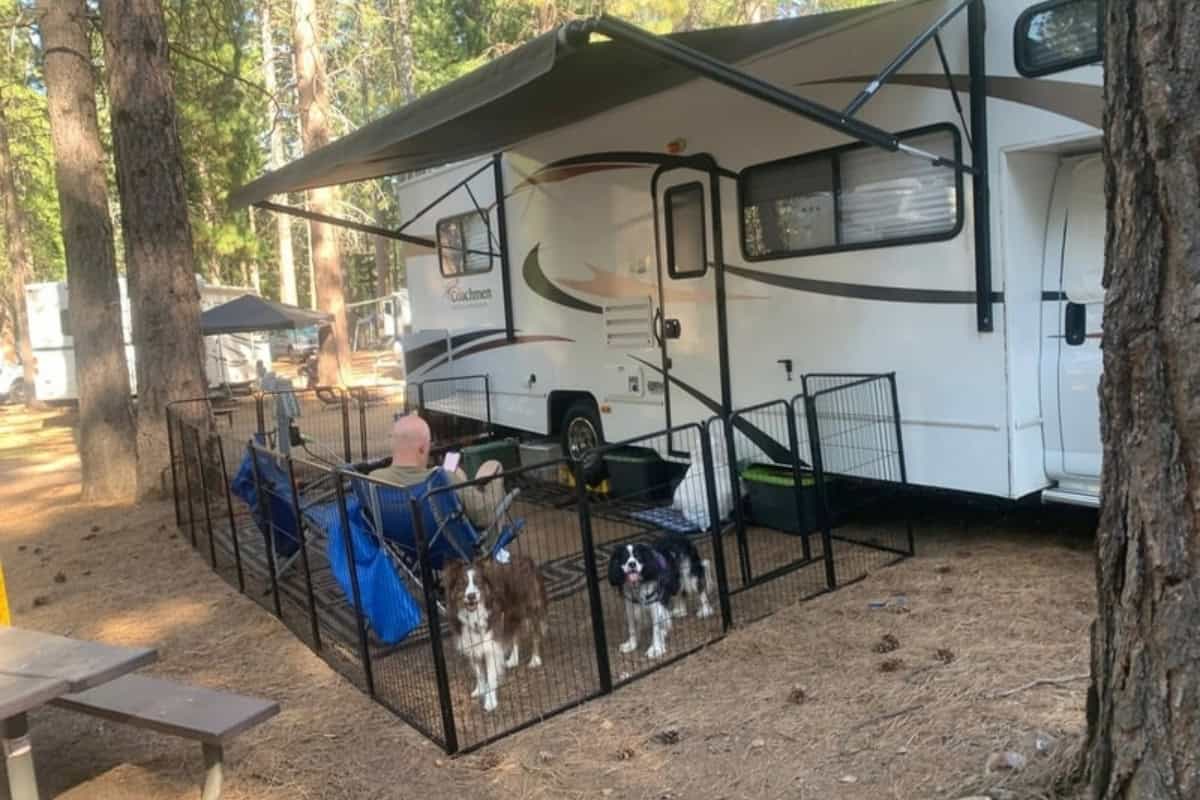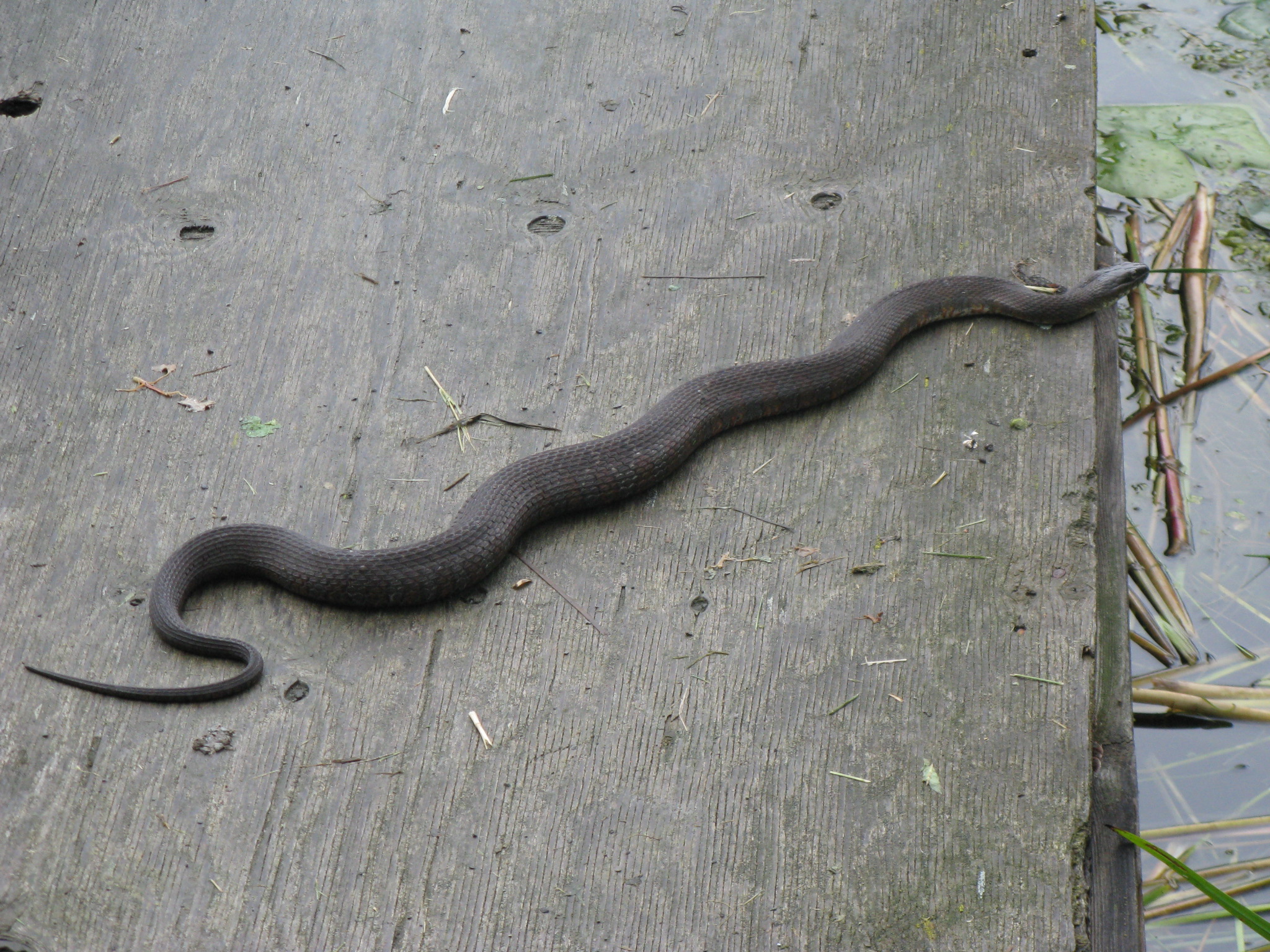
Mister Morris, Public domain, via Wikimedia Commons
Look Out For These Water Snakes In The Southeast
Any time you are going camping near lakes, streams, or rivers, it’s pretty common to see water snakes. Not to give you nightmares or anything, but the reality is that almost all snakes can swim.
Seeing any snake is already enough to give you the heebie-jeebies and put you on edge. But knowing how to identify a poisonous snake versus a non-poisonous snake can help put you at ease, at least a little bit. Here are some key aspects you should know when trying to identify whether or not a snake is venomous.
The Infamous Water Moccasin
Also known as a cottonmouth, the venomous water moccasin has several traits that make it easy to tell that it’s not your everyday water snake. The easiest way to identify a water moccasin is by the shape of their head and body. Its head is blocky with a triangular shape. It has a slender neck that leads to a thicker body, in comparison to non-poisonous water snakes, whose head and body are smaller and more slender all the way to their tail.
Water moccasins are aggressive by nature, so if you come across one, your best bet is to stay far away from it. If it feels threatened, a water moccasin will coil its body and vibrate its tail. This is a warning to scare you away. It will also open its mouth wide, showing its white inner mouth. This gives it the more common name cottonmouth.
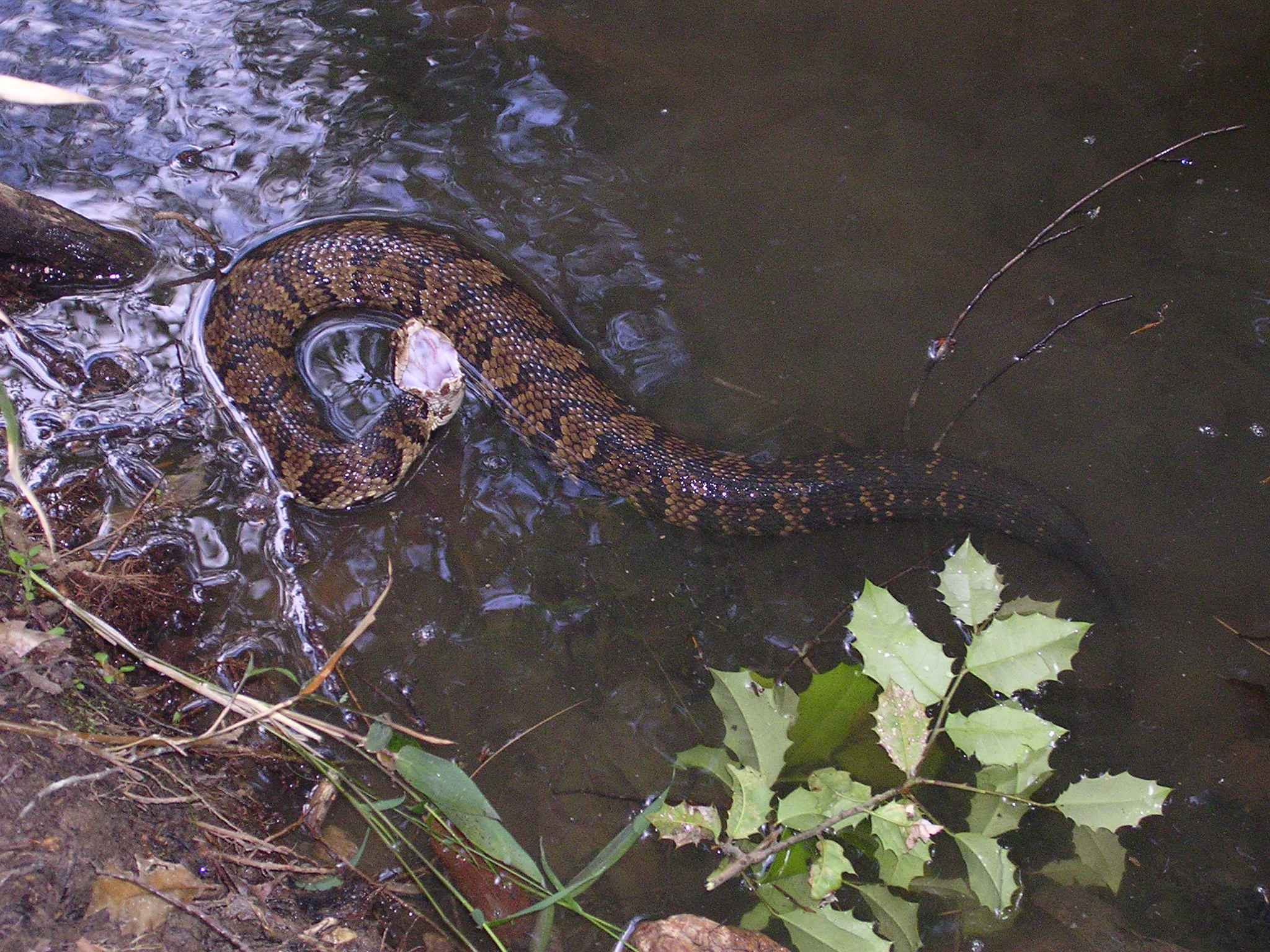
Pattavina Pete, U.S. Fish and Wildlife Service, Public domain, via Wikimedia Commons
You can find water moccasins living in the southeastern United States. It is primarily found near freshwater sources such as rivers, lakes, and creeks. They like hanging out in low lying branches of trees near the water’s edge. Be extra cautious if you are boating or canoeing and have to dock in an area with lots of trees. Water moccasins also enjoy lounging on logs near the water. This is so they can be close to the water’s edge to pounce on their prey.
A defining difference in whether or not a water snake is poisonous is the way it swims. A poisonous snake will skim along the top of the water. A non-poisonous snake will swim with its body submerged, with its head popped up from the water line.
Eastern Coral Snakes: “Red on Yellow, Kill a Fellow…“
There are several types of coral snakes, but today we are focusing on the eastern coral snake. This snake has bright colored rings of red, yellow, and black. These markings make this snake very easy to identify.
Eastern coral snakes live in wooded and marshy areas close to freshwater sources, mostly in the southeastern states. Although they can swim, most coral snakes prefer to burrow underground or in leaf piles.
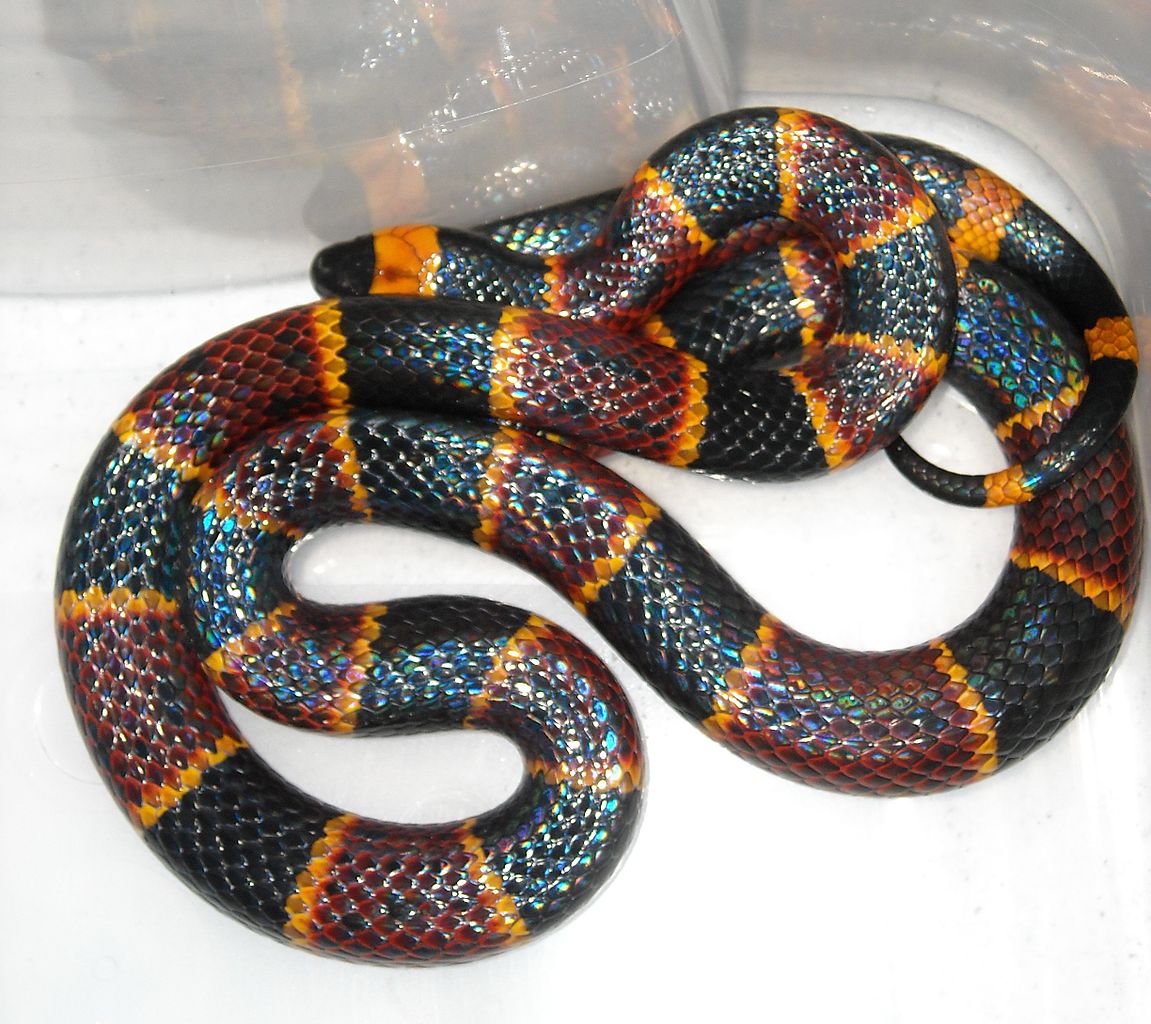
Norman.benton, CC BY-SA 3.0, via Wikimedia Commons
The eastern coral snake is very reclusive. It only poses a real threat when it is handled or stepped on by accident. If bitten by an eastern coral snake, the bite would most likely look ok with little to no pain or swelling.
Do not let this fool you. If not treated within 12 hours the neurotoxin kicks in. This can cause double vision and slurred speech. A bite from the eastern coral snake can often lead to cardiac and respiratory failure, if not treated in a timely fashion.
Common Watersnake
Found near wetlands all over the eastern U.S., the common watersnake has fairly distinct markings in different shades of brown and black. These snakes are often mistaken for water moccasins.
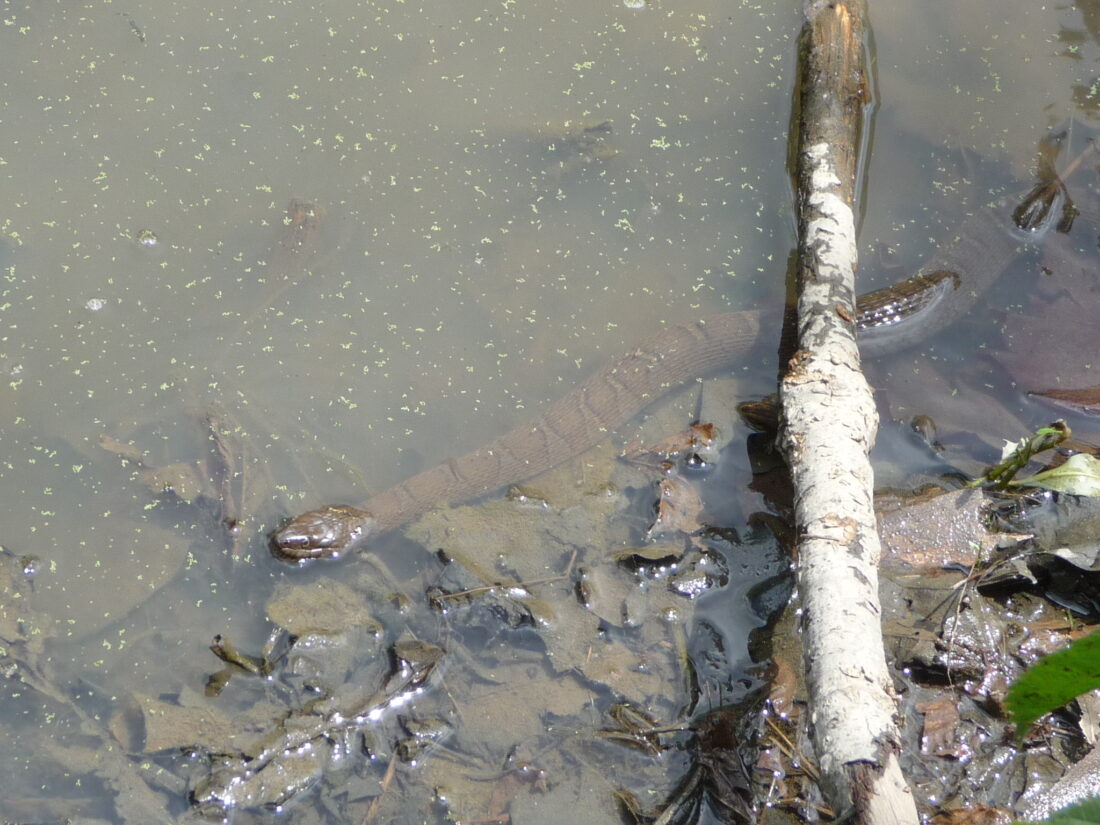
The common water snake has similar markings and coloring to a water moccasin, but are smaller in size. Once again, their head is the easiest way to identify them. They have a smaller head than the water moccasin, and their bodies are more slender.
DeKay’s Brownsnake
This non-venomous snake lives all over the eastern United States. It also prefers forests and the edges of wetlands as their habitat. They are most often found under river rocks or stones. This snake has brown to reddish brown coloring with small scales. It is small and slender in size.
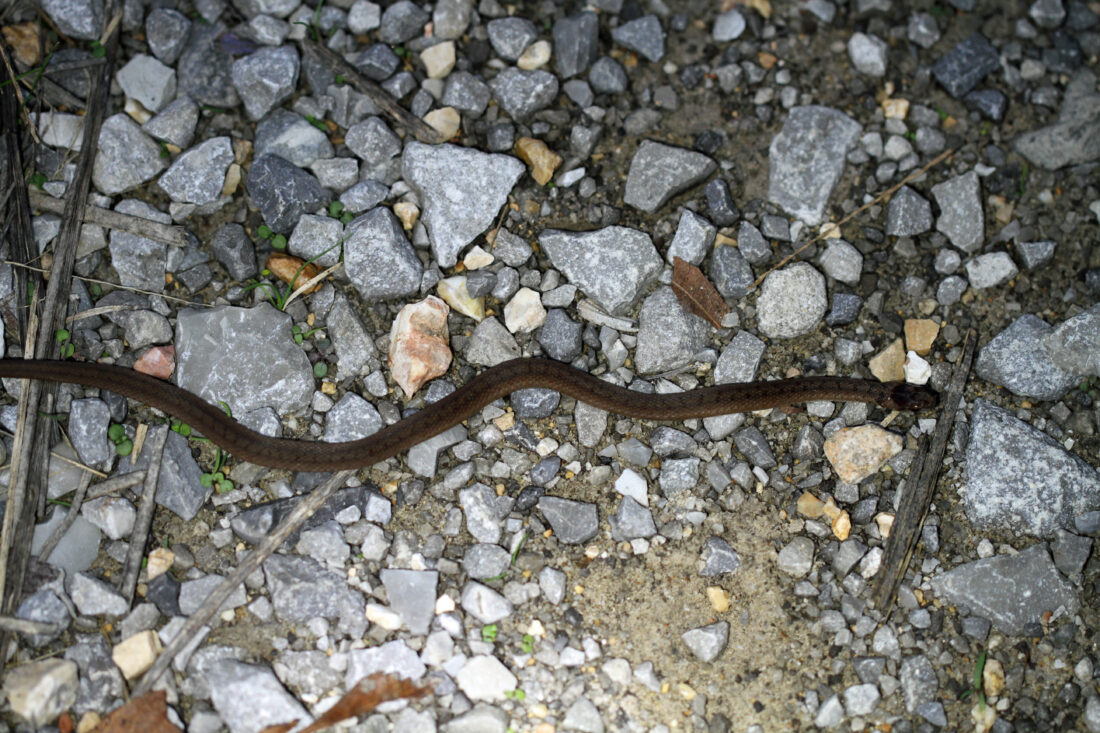
Being aware of your environment is an important part of the camper lifestyle. So is having a healthy respect for Mother Nature. Whether hiking through the woods or enjoying time on the water, we are in the company of all kinds of wildlife.
Make sure that you are wearing the right gear and being cautious when enjoying the gorgeous wilderness that our country has to offer. These are small steps to take in order to to keep you and your family safe. Be safe and happy camping!



